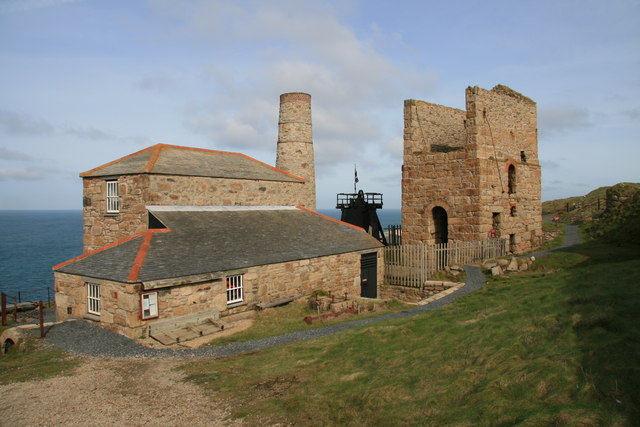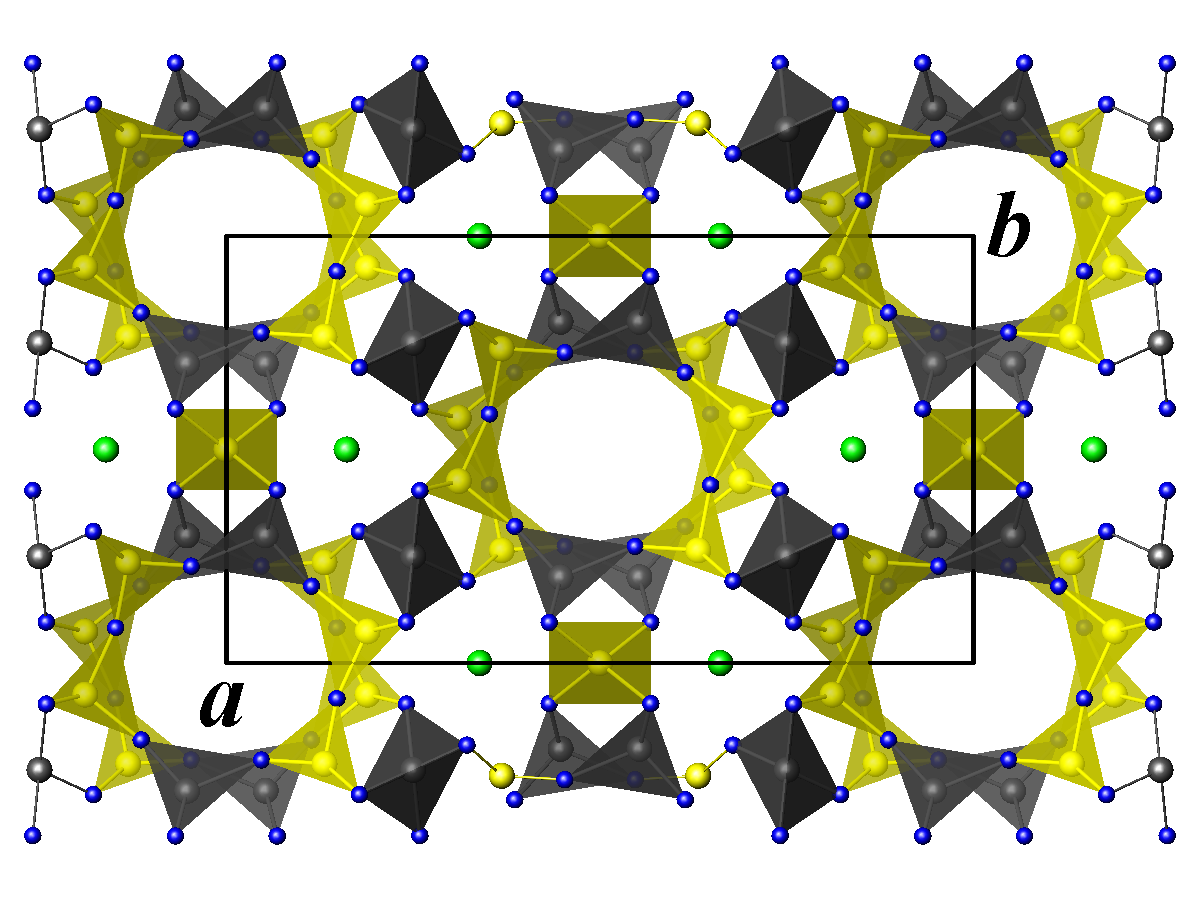|
Geevor
Geevor Tin Mine (from kw, Whel an Gever, meaning "mine of the goats"), formerly North Levant Mine is a tin mine in the far west of Cornwall, United Kingdom, between the villages of Pendeen and Trewellard. It was operational between 1911 and 1990 during which time it produced about 50,000 tons of black tin. It is now a museum and heritage centre left as a living history of a working tin mine. The museum is an Anchor Point of ERIH, The European Route of Industrial Heritage. Since 2006, the mine has been part of the UNESCO World Heritage Site Cornwall and West Devon Mining Landscape. History Tin and copper have been mined from the general area of Geevor since the late 18th century. It was originally a small enterprise known as ''Wheal an Giver'', "a piece of ground occupied by goats". The area was worked under the name of East Levant Mine until 1840 and then as North Levant from 1851 to 1891 when it closed.Stanier, 1998 p.53 During the 1880s as many as 176 workers were employed at ... [...More Info...] [...Related Items...] OR: [Wikipedia] [Google] [Baidu] |
Geevor Waterwheel Stamps
Geevor Tin Mine (from kw, Whel an Gever, meaning "mine of the goats"), formerly North Levant Mine is a tin mine in the far west of Cornwall, United Kingdom, between the villages of Pendeen and Trewellard. It was operational between 1911 and 1990 during which time it produced about 50,000 tons of black tin. It is now a museum and heritage centre left as a living history of a working tin mine. The museum is an Anchor Point of ERIH, The European Route of Industrial Heritage. Since 2006, the mine has been part of the UNESCO World Heritage Site Cornwall and West Devon Mining Landscape. History Tin and copper have been mined from the general area of Geevor since the late 18th century. It was originally a small enterprise known as ''Wheal an Giver'', "a piece of ground occupied by goats". The area was worked under the name of East Levant Mine until 1840 and then as North Levant from 1851 to 1891 when it closed.Stanier, 1998 p.53 During the 1880s as many as 176 workers were employed at ... [...More Info...] [...Related Items...] OR: [Wikipedia] [Google] [Baidu] |
St Just In Penwith
St Just ( kw, Lan(n)ust), known as St Just in Penwith, is a town and civil parish in the Penwith district of Cornwall, England, United Kingdom. It lies along the B3306 road which connects St Ives to the A30 road. The parish encompasses the town of St Just and the nearby settlements of Trewellard, Pendeen and Kelynack: it is bounded by the parishes of Morvah to the north-east, Sancreed and Madron to the east, St Buryan and Sennen to the south and by the sea in the west. The parish consists of of land, of water and of foreshore. The town of St Just is the most westerly town in mainland Britain and is situated approximately west of Penzance along the A3071. St Just parish, which includes Pendeen and the surrounding area, has a population of 4,637 (2011 census). An electoral ward of the same name also exists: the population of this ward at the same census was 4,812. St Just lies within the Cornwall Area of Outstanding Natural Beauty (AONB). St Just is one of only two town ... [...More Info...] [...Related Items...] OR: [Wikipedia] [Google] [Baidu] |
Trewellard
Trewellard (from kw, Trewylard, meaning "Gwylard's settlement"; ) is a small village on the north coast road between St Just and St Ives in Cornwall, England, United Kingdom. It lies along the B3306 road which connects St Ives to the A30 road. It is situated 7 miles from Land's End and 7 miles from Penzance. It is in the civil parish of St Just and the electoral division of St Just in Penwith. Trewellard lies within the Cornwall Area of Outstanding Natural Beauty (AONB). Almost a third of Cornwall has AONB designation, with the same status and protection as a National Park. History and geography The village is in an area of outstanding natural beauty and a Site of Special Scientific Interest (SSSI) due to the ancient tin workings and the penultimate working tin mine in Cornwall, Geevor, that closed finally in 1990. Geevor is now a museum and forms part of the World Heritage Site of Cornwall and West Devon Mining Landscape. Down the lane from Trewellard is Levant Tin Mine ... [...More Info...] [...Related Items...] OR: [Wikipedia] [Google] [Baidu] |
Pendeen
Pendeen (from kw, Penn Din meaning "headland fort", previously known as kw, Boskaswal Wartha, meaning "Caswal's high dwelling") is a village and ecclesiastical parish on the Penwith peninsula in Cornwall, United Kingdom. It is north-northeast of St Just and west of Penzance. It lies along the B3306 road which connects St Ives to Land's End and the A30 road. The village has a community centre, a shop, a post office, a primary school, and a few small businesses. Community activities include an art club, a gardening club, silver marching band and a football club. Nearby settlements include Carnyorth and Trewellard and the historic Geevor Tin Mine is immediately north of the village. The village gets its name from the headland on which Pendeen Lighthouse stands, a mile from the village. Like many other Cornish villages near the coast, Pendeen had a reputation for smuggling activities. Pendeen is overlooked by a hill, Carn Eanes, referred to locally as 'The Carn', the site ... [...More Info...] [...Related Items...] OR: [Wikipedia] [Google] [Baidu] |
European Route Of Industrial Heritage
The European Route of Industrial Heritage (ERIH) is a tourist route of the most important industrial heritage sites in Europe. This is a tourism industry information initiative to present a network of industrial heritage sites across Europe. The aim of the project is to create interest for the common European heritage of the Industrialisation and its legacy. ERIH also wants to promote regions, towns and sites showing the industrial history and market them as visitor attractions in the leisure and tourism industry. History The concept of using a European Route of Industrial Heritage was born in 1999; it was recognised there had been no single event to shape the European landscape greater than the industrial revolution. That changed the working culture of all Europeans, and gave common experiences to communities across Europe whether it be deep mine coal working in the Rühr or South Wales. Four countries, Great Britain, Belgium, Germany and the Netherlands successfully applied for E ... [...More Info...] [...Related Items...] OR: [Wikipedia] [Google] [Baidu] |
Cornwall And West Devon Mining Landscape
The Cornwall and West Devon Mining Landscape is a World Heritage Site which includes select mining landscapes in Cornwall and West Devon in the south west of England. The site was added to the World Heritage List during the 30th Session of the UNESCO World Heritage Committee in Vilnius, July 2006. Following plans in 2011 to restart mining at South Crofty, and to build a supermarket at Hayle Harbour, the World Heritage Committee drafted a decision in 2014 to put the site on the List of World Heritage in Danger, but this was rejected at the 38th Committee Session at Doha, Qatar (July 2014), in favour of a follow-up Reactive Monitoring Mission. History Up to the mid-16th century, Devon produced approximately 25-40% of the amount of tin that Cornwall did but the total amount of tin production from both Cornwall and Devon during this period was relatively small. After the 1540s, Cornwall's production took off and Devon's production was only about between a ninth to a tenth of that of C ... [...More Info...] [...Related Items...] OR: [Wikipedia] [Google] [Baidu] |
Levant Mine And Beam Engine
Levant Mine and Beam Engine is a National Trust property at Trewellard, Pendeen, near St Just, Cornwall, England, UK. Its main attraction is that it has the world's only Cornish beam engine still operated by steam on its original site. There is also a visitor centre, a short underground tour, and the South West Coast Path leads to Botallack Mine, via a cliff-top footpath. In 1919 the engine used to transport men between the different levels of the mine failed, leading to the deaths of thirty-one men. Since 2006, the area has been part of the UNESCO World Heritage Site, Cornwall and West Devon Mining Landscape. Site The property is on the site of the former Levant Mine, established in 1820 and closed in 1930, where tin and copper ores were raised. The mine reached a depth of about 600 metres. It got the nickname "mine under the sea", because tunnels were driven up to 2.5 km from the cliffs under the sea. The surviving beam engine was built by Harvey's of Hayle. ... [...More Info...] [...Related Items...] OR: [Wikipedia] [Google] [Baidu] |
Cordierite
Cordierite (mineralogy) or iolite (gemology) is a magnesium iron aluminium cyclosilicate. Iron is almost always present and a solid solution exists between Mg-rich cordierite and Fe-rich sekaninaite with a series formula: to . A high-temperature polymorph exists, indialite, which is isostructural with beryl and has a random distribution of Al in the rings. Name and discovery Cordierite, which was discovered in 1813, in specimens from Níjar, Almería, Spain, is named after the French geologist Louis Cordier (1777–1861). Occurrence Cordierite typically occurs in contact or regional metamorphism of pelitic rocks. It is especially common in hornfels produced by contact metamorphism of pelitic rocks. Two common metamorphic mineral assemblages include sillimanite-cordierite-spinel and cordierite-spinel-plagioclase- orthopyroxene. Other associated minerals include garnet (cordierite-garnet-sillimanite gneisses) and anthophyllite. Cordierite also occurs in some granites, pegm ... [...More Info...] [...Related Items...] OR: [Wikipedia] [Google] [Baidu] |
Mining
Mining is the extraction of valuable minerals or other geological materials from the Earth, usually from an ore body, lode, vein, seam, reef, or placer deposit. The exploitation of these deposits for raw material is based on the economic viability of investing in the equipment, labor, and energy required to extract, refine and transport the materials found at the mine to manufacturers who can use the material. Ores recovered by mining include metals, coal, oil shale, gemstones, limestone, chalk, dimension stone, rock salt, potash, gravel, and clay. Mining is required to obtain most materials that cannot be grown through agricultural processes, or feasibly created artificially in a laboratory or factory. Mining in a wider sense includes extraction of any non-renewable resource such as petroleum, natural gas, or even water. Modern mining processes involve prospecting for ore bodies, analysis of the profit potential of a proposed mine, extraction of the desired materials, an ... [...More Info...] [...Related Items...] OR: [Wikipedia] [Google] [Baidu] |







